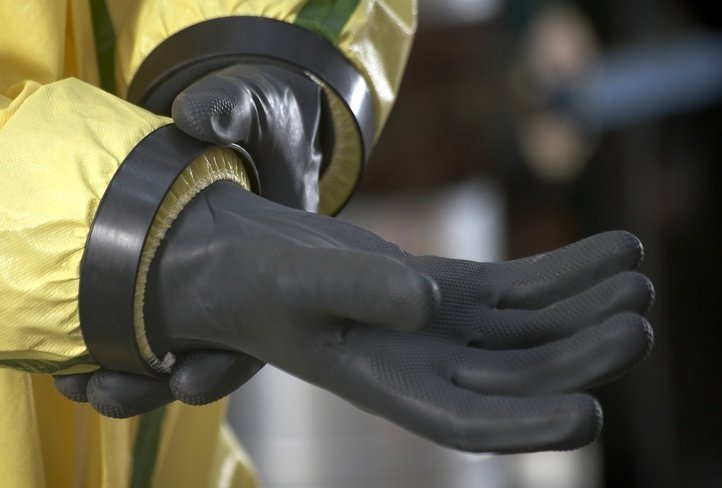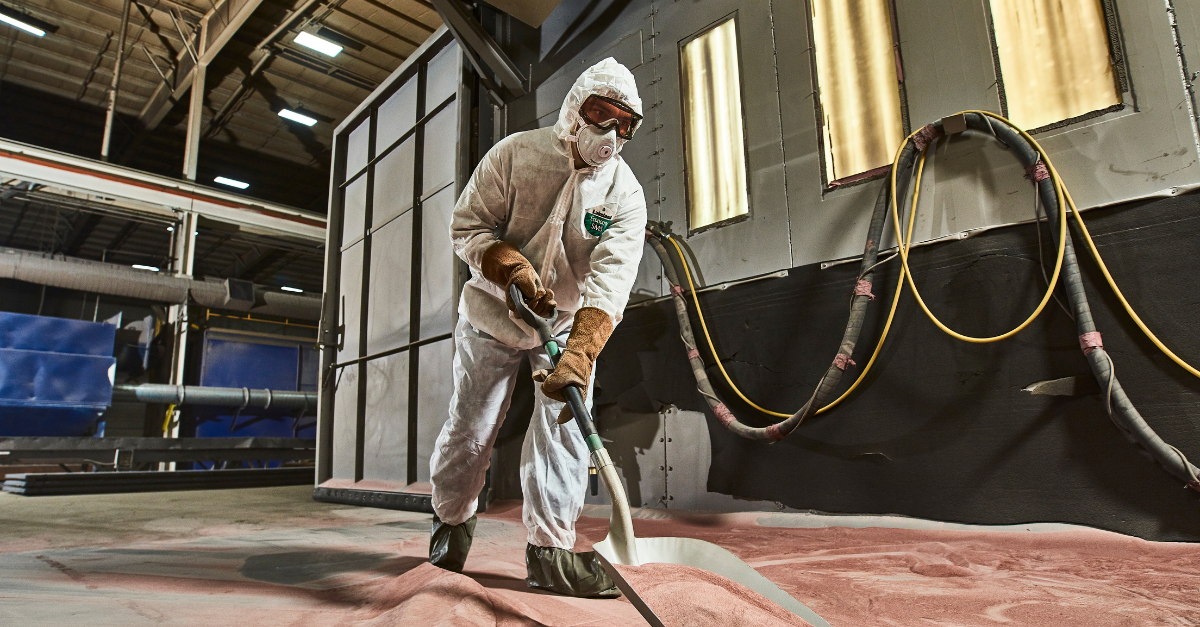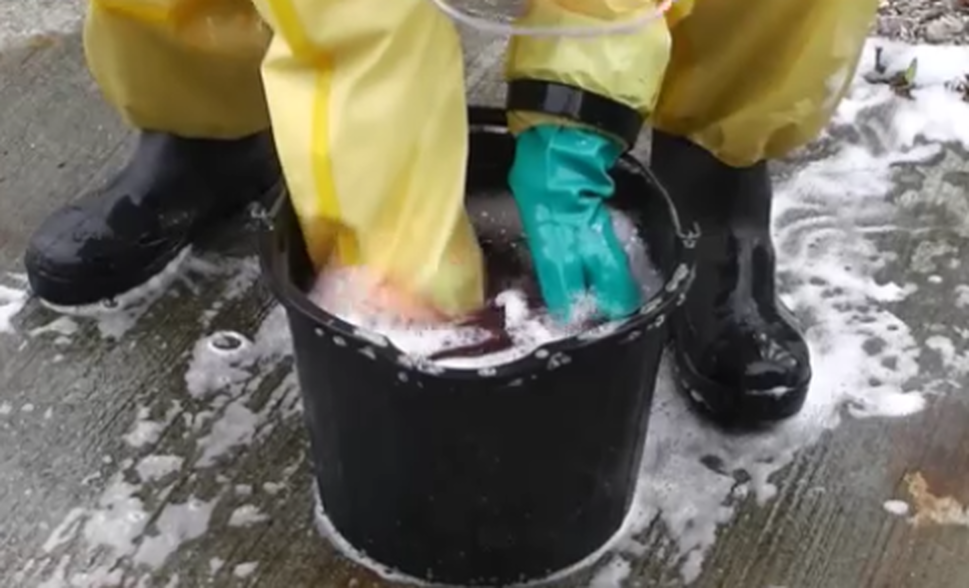
No matter how effective your disposable chemical suit – or for that matter your chemical gloves – the effectiveness of the ensemble will depend on the seal you manage to achieve between them – especially if your application is Type 3.
Different methods are employed – some more effective than others:
1. Some manufacturers offer a double cuff on the garment sleeve. The gauntlet of the glove is worn outside the inner cuff and the outer cuff sits outside the glove gauntlet.
While an improvement over a standard single cuff this is clearly not a liquid tight seal (Type 3 by definition requires a liquid tight seal). Further it might be suitable in some limited applications, but if reaching overhead repeatedly, or if the application involves repeated movement there is a serious risk the chemical could work its way between the layers.
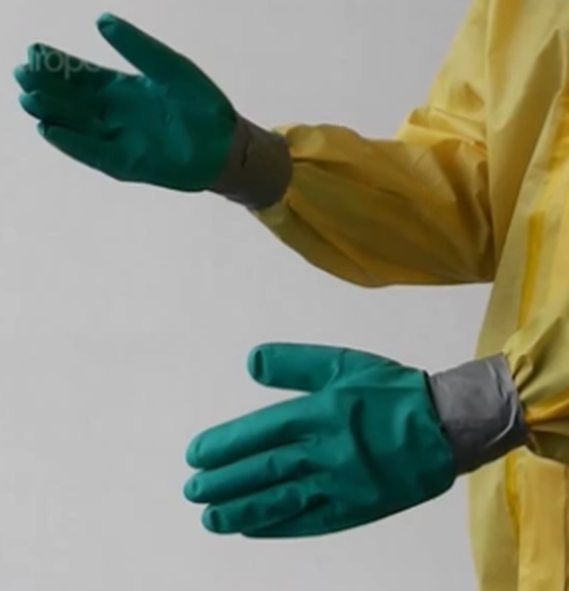 2. Commonly users tape up the join between the glove and the sleeve with a suitable chemical tape, wrapping the tape around the join repeatedly.
2. Commonly users tape up the join between the glove and the sleeve with a suitable chemical tape, wrapping the tape around the join repeatedly.
While possibly being superior to a standard sleeve and to the double cuff in that it might achieve a liquid tight seal, the problem is you simply do not know if it is liquid tight or not – that is until you prove it is not when it leaks in use, at which point of course it is too late.
Furthermore what is a “suitable” adhesive tape? How do you know if it is providing sufficient protection against the chemical in use?
And what about cost control? Protection is of course the primary need, but have you calculated how many meters of tape is used per sleeve to hopefully ensure a good seal. And how much is actually used? This could be a very expensive guess in more ways than one!
Both of these methods MIGHT be 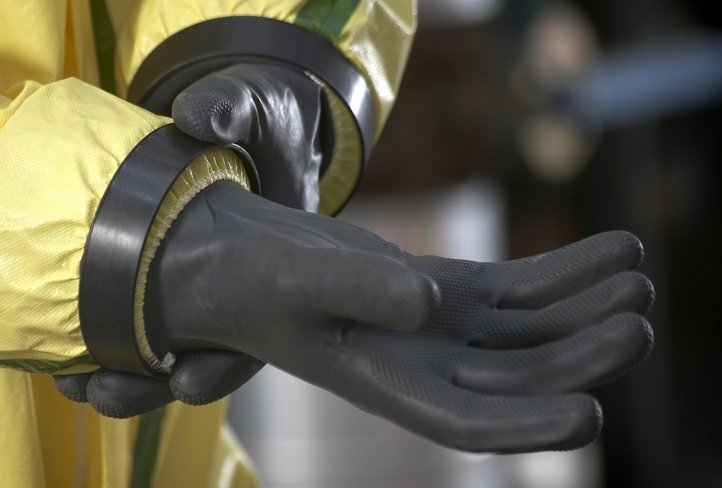 suitable in some applications. But especially in Type 3 applications (and it is always worth identifying whether your application is a Type 3 OR a Type 4), where pressure sprays of liquids are involved, they may well be inadequate and mean you do not have a Type 3 ensemble at all…
suitable in some applications. But especially in Type 3 applications (and it is always worth identifying whether your application is a Type 3 OR a Type 4), where pressure sprays of liquids are involved, they may well be inadequate and mean you do not have a Type 3 ensemble at all…
It is therefore good practice to consider how you connect sleeve and glove in the light of the specifics of your application. How important is achieving a liquid-tight seal… and how sure are you that you have one..?
Lakeland’s ChemMAX Push-Fit Glove connection system provides a secure method of attaching chemical gloves to ChemMAX chemical suits. It may well be the right solution for your application.


